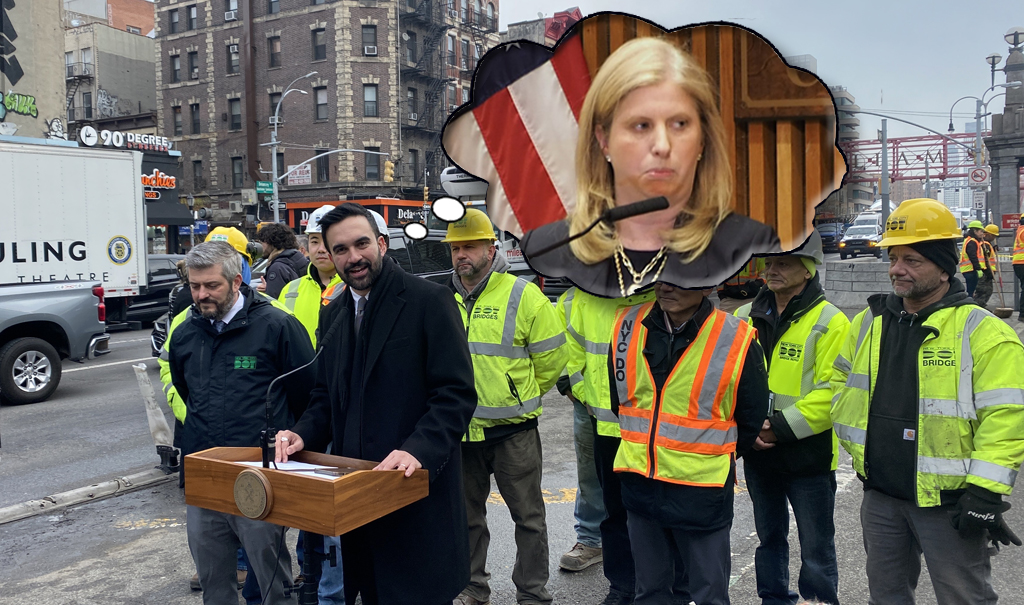
The 2nd Street entrance to the Crest, one of the recent additions to Fourth Avenue.
After Streetsblog ran a critique of new development on Brooklyn's Fourth Avenue last week, we asked the Department of City Planning to address a few questions that came up in the comments. Namely, what can be done to stop developers from putting up parking lots, blank walls, and industrial vents right next to the sidewalk? The DCP press office sent us this reply, which sheds some light on the zoning requirements the city uses to encourage active retail streets, and how it chooses to apply those measures:
It is of paramount importance to City Planning that we create places with a vibrant pedestrian environment. In higher density areas with a concentration of commercial activity, such as Downtown Brooklyn, Jamaica, and Hudson Yards, we've included retail continuity and transparency requirements. In certain special districts we require that parking be "wrapped" with commercial, residential or community facility uses on the ground floor. However, in other less established commercial areas there's been a necessity for ground-floor retail to remain optional, rather then mandatory which might result in barren, empty storefront space.
The lack of retail storefronts along 4th Avenue is a missed opportunity, and we expect that as new housing adds potential customers, future developers will see the advantages of providing ground floor retail. The city continues to evaluate our parking policy as we continue to look for creative ways to ensure an active public realm throughout the five boroughs.
The zoning on 4th Avenue (R8A coupled with a commercial district) isessentially the same zoning that has been applied in a number of otherparts of the city, such as on Court Street in Downtown Brooklyn andUpper Manhattan, where it has resulted in buildings with active groundfloor uses.
On the question of parking requirements, and whether developers have included on-site parking by law or by choice, here's what DCP said:
Accessory parking in the R8A district is required for 40% of the dwelling units; parking can be waived if 15 or fewer spaces are required or if the zoning lot is 10,000 square feet or less.
In R8A (6.02 FAR max):On a 10,000 sf lot, you can build approx 60,000 sf (approx 60 units). On a lot of up to 15,000 sf, the parking requirement is reduced to 20%. You can waive out for 15 or fewer spaces, which translates to 75 units.
The permits for the Novo, for instance, (the 1st building to go up on 4th Avenue) list 113 units, with 60 parking spaces (attended). This exceeds the required 45 spaces.
Sounds like the minimums have to go and more changes are in order to rein in developers' bad instincts. Parking maximums, anyone?





